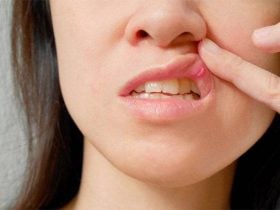Overview

This is a disease [1] caused by a group of viruses (herpes viruses), affecting the skin with blisters or affecting the nervous system. HSV is a sexually transmitted disease (STD), a larger percentage of people with this infection don’t see signs, so they are not aware. The virus is spread by skin-to-skin contact with a person who has the herpes virus, which makes it a communicable disease. Women and people with a weak immune system can get a herpes infection more easily. The virus enters the body through the lining of the mouth, labia, vagina, and penis, regular skin that has small cracks or cuts.
Herpes is different for each person. The signs and symptoms may keep happening, off and on, for years. Some people experience these signs plenty of times each year. For many people, however, the outbreaks are less frequent as time passes.
Following the initial outbreak, the virus remains in the nerve cells beneath the skin but does not affect it. It usually becomes active again as times go on, moving back up to the skin and causing more sores. Things like stress, illness, a new sex partner, or menstruation may trigger a new outbreak. As time goes on, the outbreaks happen less often, the healing becomes faster, and don’t hurt as much as it was in the initial outbreak.
Herpes can appear in various parts of the body, most commonly on the genitals or mouth. There are two types [2] of the herpes simplex virus:
- HSV-1: This is oral herpes caused by oral sex, and is generally responsible for cold sores and fever blisters around the mouth and on the face.
- HSV-2: This is genital herpes caused by vaginal or anal penetration, and is responsible for outbreaks in the thighs, buttocks, and around the vagina.
Here are some common symptoms [3] of herpes:













